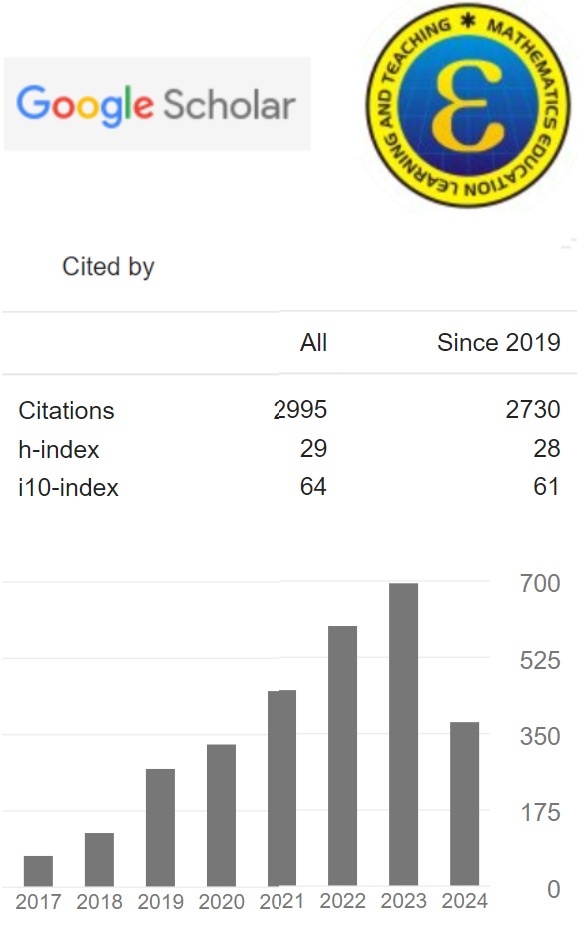PEMODELAN MATEMATIKA MANFAAT JUMLAH RAKAAT SHALAT PADA PEMBAKARAN KALORI DALAM TUBUH
(1)
(*) Corresponding Author
Abstract
Salah is a grand Muslim worship that starts with takbir and ends by salam.Salat is also the most important worship after syahadah. The command of salat is stated in Noble Quran, Al Ankabut chapter (Surah): verse of 45. In addition to the following command of salah, in fact the peaceful (tumakninah) salah benefits healthy. Calorie burning in every rakaat (the repetition of a unit in salah) of salah, is able to build healthy body. One rakaat is able to burn around 25 calories. So that, the more rakaat in salah, the more calories burnt in our bodies. Total of burnt calories during salah with tukmaninah in a day is 525 calorie with the following assumptions: 5 times of obligatory (fardhu) salah, 17 rakaats and 2 sunnah (optional) salah 4 rakaats without sunnah rawatib salah. Based on some researches, there are a lot of advantages of salah for physical and mental health. Through this research, the writer has attempted to review the advantage of motion of tukmaninah salah over calorie burning in bodies. The research also indiacates how to create mathematical modelling of the advantage of total rakaat of salah over calorie burning in bodies that eventually affect to health.
Â
Key words: Mathematical modelling, number of rakaah, calorie burning in body
Full Text:
PDFReferences
Al-Khuli, Hilmi. (2008) Menyingkap Rahasia Gerakan – gerakan Shalat, Yogyakarta : Diva Press.
Mufti, Arifin.(2004) Matematika Alam Semesta. PT Kiblat Buku Utama Bandung.
Muftie, Arifin. (2004) Matematika Alam Semesta Kodetifikasi Bilangan Prima dalam Al Qur’an, P.T. Kiblat Buku Utama Bandung.
Rajin, M.(2011) Pengaruh Shalat Dhuha Terhadap Penurunan Kadar Glukosa darah, Jurnal Eduhealth, Fakultas Ilmu Kesehatan Unipdu Jombang, Ed. 1
Rajin, M.,(2012) Penurunan kadar glukosa darah pada latihan isometric dan IL-sotonik,. Jurnal EduHealth, Vol 2 Nomor 1, April 2012, ISSN 2087-3271 hal. 6-14. .
Remaud, Anthony. (2013) Isometric/Isotonic Exercise, in Encyclopedia of Behavioral Medicine,Springer, 1123–24
Shihab, Quraish. (1992) Membumikan ALQuran, Mizan, Bandung
Sholeh, M. (2010). Terapi shalat tahajud menyembuhkan berbagai penyakit. Jakarta: PT Mizan Publika.
Sukadiyanto. (2010). Stres dan cara menguranginya. Jurnal Ilmiah Pendidikan, 29 (1), 45-61.
Sunusi, D.M., (2013). Indahnya shalat malam : tuntunan qiyamul lail dan shalat tarawih. Makassar: Pustaka as-Sunnah.
Syafii, JM, (2008) Sehat Dan Bugar Dengan Kekuatan Gerakan Shalat.Cikarang : Duha Khasanah.
Daftar Website
http://definisi_sholat diakses pukul 13.04 tanggal 2 Agustus 2017
http://gambar_gerakan_sholat diakses pukul 22.00 tanggal 9 November 2017
http://keutamaan-sholat-untuk-kesehatan.com diakses pukul 11.30 tanggal 11 November 2017
http://kalori-saat-stretching//olahraga diakses pukul 21.30 tanggal 9 November 2017
https://muslim.or.id/13845-tumaninah-dalam-shalat-1.html diakses pukul 11.12 tanggal 11 November 2017
http://qurandansunnah.wordpress.com/2010/05/27/kebutuhan-kalori-manusia/ diakses pukul 20.00 tanggal 10 November 2017
http://rukyatulhilal.org/artikel/awal-waktu-shalat-perspektif-syari-dan-sains.html diakses pukul 21.00 tanggal 10 November 2017
http://wikaprima.wordpress.com/info-kesehatan/manfaat-gerakan-sholat-bagi-kesehatan/ diakses pukul 20.14 tanggal 10 November 2017
DOI: 10.24235/eduma.v6i2.2182
Article Metrics
Abstract view : 646 timesPDF - 251 times
Refbacks
- There are currently no refbacks.
Copyright (c) 2022 Eduma : Mathematics Education Learning and Teaching


.png)










